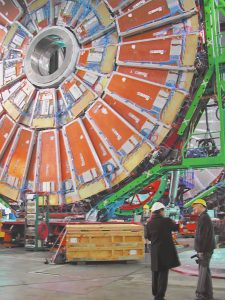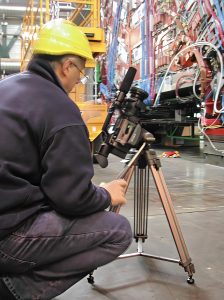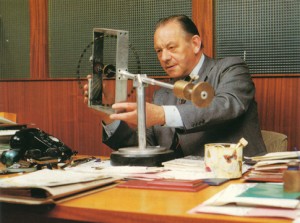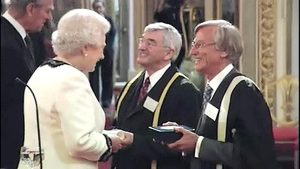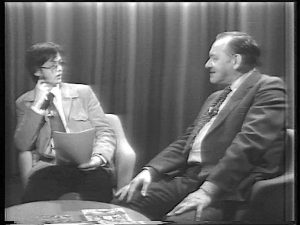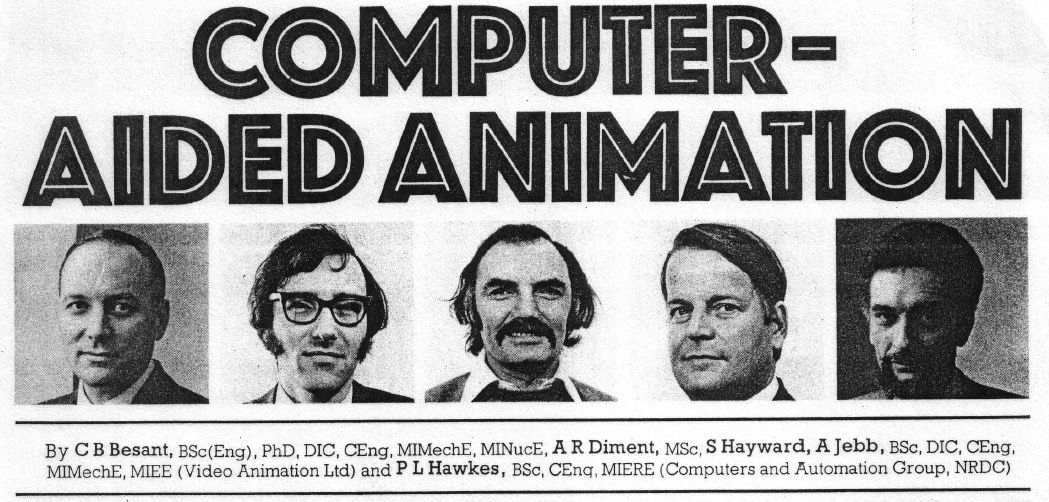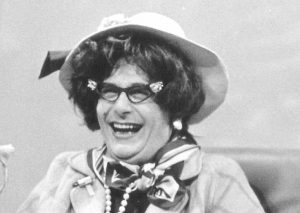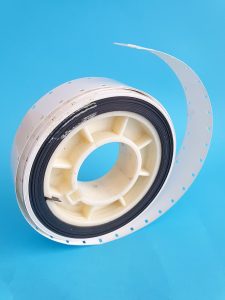Yes, it’s hard to believe but there was research into electric cars at Imperial way back over 50 years ago. And this is once again a story for which the original videotape was long ago erased (assuming there was one). The programme was called La Jamais Contente.
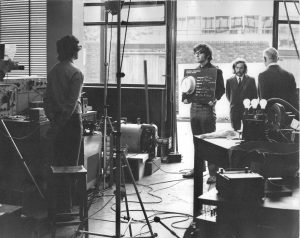 What we do have are some precious photos that were taken at the time of some of the recordings on 20 June 1972. STOIC presenter Richard Woodhead is seen along with Electrical Engineering academic staff member and “EV” researcher John Prigmore (both far right with John Prigmore’s back to camera). The vehicle was a “bubble car” that was converted to electric operation. It really is so long ago that I can’t remember any of the details about the programme or indeed why it was made.
What we do have are some precious photos that were taken at the time of some of the recordings on 20 June 1972. STOIC presenter Richard Woodhead is seen along with Electrical Engineering academic staff member and “EV” researcher John Prigmore (both far right with John Prigmore’s back to camera). The vehicle was a “bubble car” that was converted to electric operation. It really is so long ago that I can’t remember any of the details about the programme or indeed why it was made.

As usual I resorted to searching the FELIX newspaper online archive and found this item announcing the showing of the programme almost 5 months after the location recording took place.
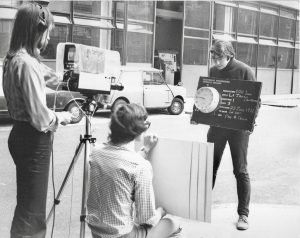 The still photos are interesting because it has reminded me that we could not transport the Ampex video recorder. You can see the “Link” camera we had for such work outside of the studio and this had cabling from the roadway on level one up into the TV Studio on level three. That’s me with a series of cue cards and the countdown clock to ident the sequence being recorded. From looking at the countdown clock board, these were sequences shot as ‘inserts’ for the programme which was to have been edited.
The still photos are interesting because it has reminded me that we could not transport the Ampex video recorder. You can see the “Link” camera we had for such work outside of the studio and this had cabling from the roadway on level one up into the TV Studio on level three. That’s me with a series of cue cards and the countdown clock to ident the sequence being recorded. From looking at the countdown clock board, these were sequences shot as ‘inserts’ for the programme which was to have been edited.
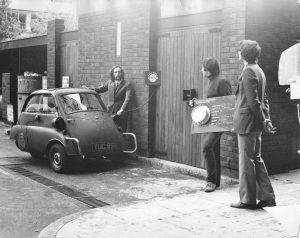 Here’s Richard Woodhead with the car, he’s pretending to plug it in for recharging. Again, this was down on the level one roadway by Electrical Engineering. It’s very difficult to see, but the small sign stuck to the wall near his shoulder says “Electric Vehicle Charging Station”. How funny that 50 years later Imperial College really does now have charging stations for EV’s on the South Kensington campus!
Here’s Richard Woodhead with the car, he’s pretending to plug it in for recharging. Again, this was down on the level one roadway by Electrical Engineering. It’s very difficult to see, but the small sign stuck to the wall near his shoulder says “Electric Vehicle Charging Station”. How funny that 50 years later Imperial College really does now have charging stations for EV’s on the South Kensington campus!
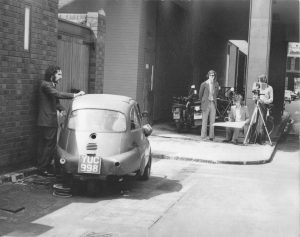 The countdown board indicates that STOIC member Paul McCallum directed this, but sadly he’s not seen in any of these photos. However, in this reverse shot of Richard Woodhead and the electric car you can see my friend Tim Jeffes sitting between me (left) and the camera. It looks like he’s possibly writing on the cue card boards which were used for prompting of the script.
The countdown board indicates that STOIC member Paul McCallum directed this, but sadly he’s not seen in any of these photos. However, in this reverse shot of Richard Woodhead and the electric car you can see my friend Tim Jeffes sitting between me (left) and the camera. It looks like he’s possibly writing on the cue card boards which were used for prompting of the script.
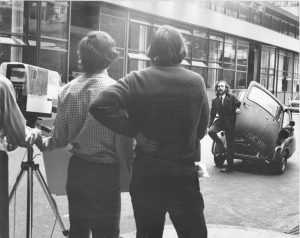 I had been trying to work out how we did the sound for these recordings and I’ve just spotted in this photo that Richard was wearing a radiomic that would have been received up by the TV Studio window on level three. I’m assuming that this was a sequence where we actually got to see the car working and that he was just stepping out of the car to record a piece to camera.
I had been trying to work out how we did the sound for these recordings and I’ve just spotted in this photo that Richard was wearing a radiomic that would have been received up by the TV Studio window on level three. I’m assuming that this was a sequence where we actually got to see the car working and that he was just stepping out of the car to record a piece to camera.
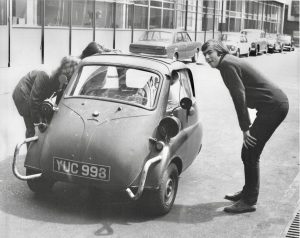 And finally a shot of the car (left photo) with John Prigmore inside. You can just see his white shirt over on the right of the car windscreen. I wonder whatever happened to YUC 998 after all of the research came to an end? From some research I found that John Prigmore died on 13 September 1984. It indicated that he worked at Imperial from 1947 to 1982 and that during is career he wrote several books although none on the subject we see here. And wouldn’t it have been great to still have these 1972 videotapes in an age where electric cars have now come into being?
And finally a shot of the car (left photo) with John Prigmore inside. You can just see his white shirt over on the right of the car windscreen. I wonder whatever happened to YUC 998 after all of the research came to an end? From some research I found that John Prigmore died on 13 September 1984. It indicated that he worked at Imperial from 1947 to 1982 and that during is career he wrote several books although none on the subject we see here. And wouldn’t it have been great to still have these 1972 videotapes in an age where electric cars have now come into being?
And a sad note to end on. I’d reached the end of writing this article and remembered that I had previously had emails from Richard Woodhead. I thought he might be able to shed more light on this video. But I found to my shock that he had died back on 5 July 2021, so my memories of this are all we now have.
Colin Grimshaw February 2022
Read An Electric Car at Imperial in 1972? in full
